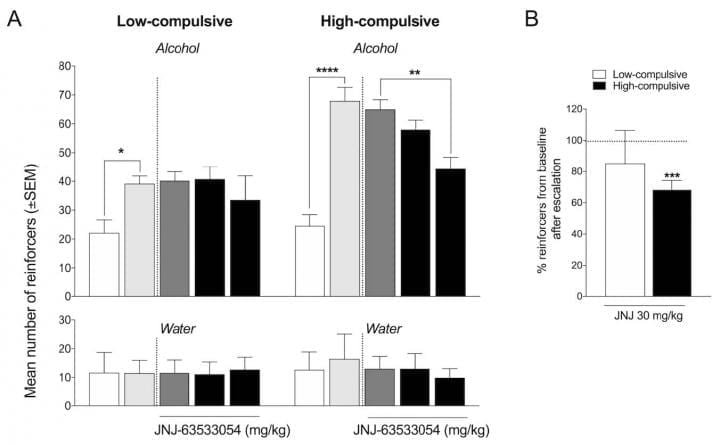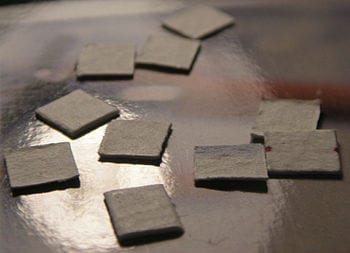
CREDIT
Kononoff et al., eNeuro (2018)
Activating GPR139 in rats reduced excessive alcohol use and pain of withdrawal
Activation of a receptor with no known function in the brain reduces excessive alcohol use and the pain of withdrawal, according to preclinical research in male rats. The study, published in eNeuro, suggests a new approach towards the treatment of alcohol use disorder.
More than a third of approved pharmaceutical drugs target G protein-coupled receptors (GPCRs). One receptor belonging to this family, GPR139, is highly expressed in the habenula — a brain region with a critical role in addiction.
Olivier George and colleagues used a rat model of alcohol dependence and a substance that activates GPR139 to establish a previously unknown role for the receptor in addiction-like behavior. The researchers found that activation of GPR139 reduced alcohol intake and restored pain sensitivity thresholds only in alcohol-dependent mice that showed compulsive-like alcohol consumption akin to problematic drinking in humans. This study is the first to establish an effect of GPR139 manipulation on behavior and encourages investigation of the receptor as a potential drug target in the development of medications for alcohol dependence.
Learn more: New target for treating alcoholism
The Latest on: Alcohol use disorder
[google_news title=”” keyword=”alcohol use disorder” num_posts=”10″ blurb_length=”0″ show_thumb=”left”]
via Google News
The Latest on: Alcohol use disorder
- ‘Wet House’ chronicles lives of men living with severe alcohol use disorderon April 30, 2024 at 8:49 am
Film’s subjects live at the Glenwood, Catholic Charities Twin Cities’ managed-use alcohol program. The Minneapolis Institute of Art will host a May 2 screening.
- MEDICAL MONDAY: Evaluating your relationship with alcoholon April 29, 2024 at 9:19 am
Do you have a healthy relationship with alcohol? Dr. Sarah Church is a Clinical Psychologist with Whole View Wellness, using her skills to help people live better.
- Local recovery group talks about the dangers of addiction during Alcohol Abuse Awareness Monthon April 28, 2024 at 11:57 pm
April is Alcohol Abuse Awareness Month, and one local recovery center wants people to know how serious the addiction can be.
- Diabetes drug may help treat alcohol use disorder: Studyon April 28, 2024 at 11:35 am
The research conducted by Simmons and Richards involved six participants who were already using semaglutide for weight management. The study reported a "significant reduction" in AUD symptoms among ...
- Westfield Health Bulletin: Be aware of alcohol’s dangers, help children make good decisionson April 26, 2024 at 9:14 pm
April is Alcohol Awareness Month, to increase awareness of the damages alcohol does to individuals, families, health and society.
- Alcohol and harm reduction residences: ‘A place to build community and to call home’on April 25, 2024 at 4:22 pm
Two Catholic Charities Twin Cities programs that treat people with long-term alcohol use disorder through a harm reduction model of managed alcohol ...
- Gov. Polis pushes to exempt big beer from proposed state alcohol feeon April 25, 2024 at 3:17 pm
Gov. Jared Polis wants lawmakers to exempt corporations like Coors Brewing Company and Anheuser-Busch from a bill that would create a new alcohol enterprise fee to raise money for alcohol use disorder ...
- Alcohol Awareness Month: Examining The Ills of Alcohol Use Disorderon April 24, 2024 at 4:16 pm
Discover the rising rates of alcohol-related deaths and the health implications of excessive alcohol use in the U.S. Find out how recovery advocates are addressing this issue in Washington, D.C.
- April is Alcohol Awareness Month | Here's what Mainers should knowon April 24, 2024 at 9:07 am
PORTLAND, Maine — April is Alcohol Awareness Month, an opportunity to check in with yourself and your loved ones to make sure you are drinking responsibly. According to the Maine Center for Disease ...
via Bing News










